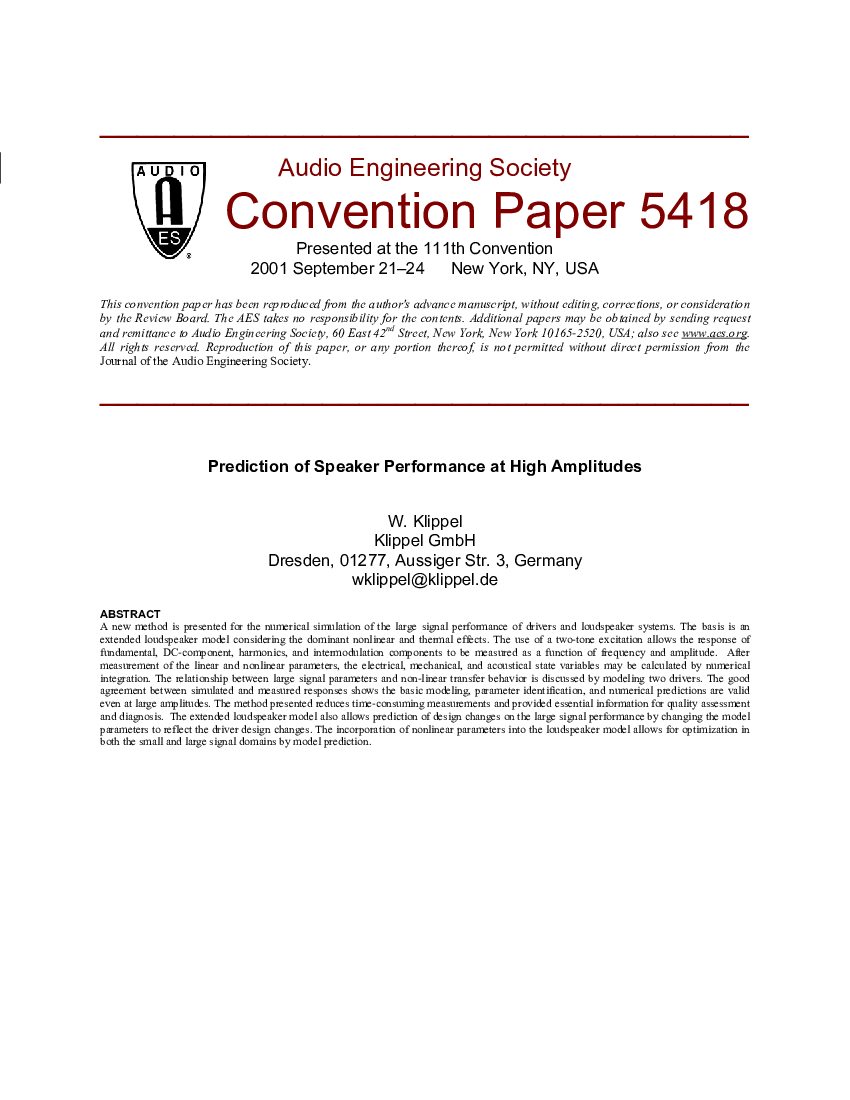Home / Publications / E-library page
You are currently logged in as an
Institutional Subscriber.
If you would like to logout,
please click on the button below.
Home / Publications / E-library page
Only AES members and Institutional Journal Subscribers can download
A new method is presented for the numerical simulation of the large signal performance of drivers and loudspeaker systems. The basis is an extended loudspeaker model considering the dominant nonlinear and thermal effects. The use of a two-tone excitation allows the response of fundamental, DC-component, harmonics, and intermodulation components to be measured as a function of frequency and amplitude. After measurement of the linear and nonlinear parameters, the electrical, mechanical, and acoustical state variables may be calculated by numerical integration. The relationship between large signal parameters and non-linear transfer behavior is discussed by modeling two drivers. The good agreement between simulated and measured responses shows the basic modeling, parameter identification, and numerical predictions are valid even at large amplitudes. The method presented reduces time-consuming measurements and provided essential information for quality assessment and diagnosis. The extended loudspeaker model also allows prediction of design changes on the large signal performance by changing the model parameters to reflect the driver design changes. The incorporation of nonlinear parameters into the loudspeaker model allows for optimization in both the small and large signal domains by model prediction.
Author (s): Klippel, Wolfgang
Affiliation:
lippel GmbH, Dresden, Germany
(See document for exact affiliation information.)
AES Convention: 111
Paper Number:5418
Publication Date:
2001-11-06
Import into BibTeX
Session subject:
Loudspeakers
Permalink: https://aes2.org/publications/elibrary-page/?id=9834
(577KB)
Click to purchase paper as a non-member or login as an AES member. If your company or school subscribes to the E-Library then switch to the institutional version. If you are not an AES member Join the AES. If you need to check your member status, login to the Member Portal.

Klippel, Wolfgang; 2001; Prediction of Speaker Performance at High Amplitudes [PDF]; lippel GmbH, Dresden, Germany ; Paper 5418; Available from: https://aes2.org/publications/elibrary-page/?id=9834
Klippel, Wolfgang; Prediction of Speaker Performance at High Amplitudes [PDF]; lippel GmbH, Dresden, Germany ; Paper 5418; 2001 Available: https://aes2.org/publications/elibrary-page/?id=9834